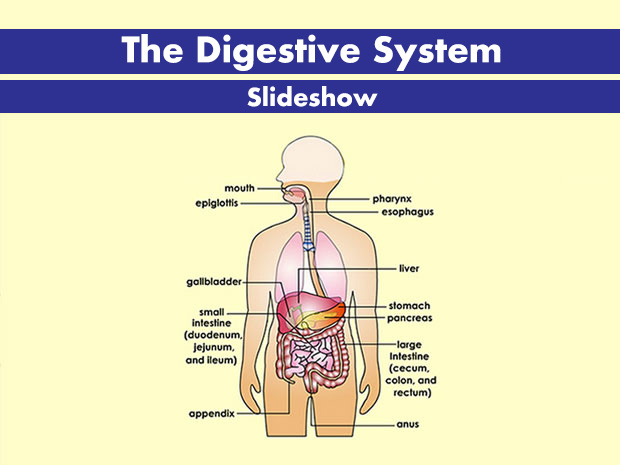Sep 12, 2022Digestion is the process of mechanically and enzymatically breaking down food into substances for absorption into the bloodstream. The food contains three macronutrients that require digestion before they can be absorbed: fats, carbohydrates, and proteins. Through the process of digestion, these macronutrients are broken down into molecules that can traverse the intestinal epithelium and enter
Digestive System Anatomy and Physiology – Nurseslabs
Dr. Lee says the entire digestive process can take several hours. Food generally stays in your stomach between 40 and 120-plus minutes. Then add another 40 to 120 minutes for time spent in the

Source Image: healthiersteps.com
Download Image
Fast facts on digestion: The body typically digests foods within 24 to 72 hours. Digestion begins from when food enters the mouth. Once in the stomach, the food is mixed with stomach acid. Once in

Source Image: healthcentral.com
Download Image
Men’s bodies cope ‘remarkably well’ with occasional huge meal – BBC Science Focus Magazine Digested food molecules are absorbed in the small intestine. This means that they pass through the wall of the small intestine and into our bloodstream. Once there, the digested food molecules are
![Incorporating dietary fiber from fruit and vegetable waste in meat products: a systematic approach for sustainable meat processing and improving the functional, nutritional and health attributes [PeerJ]](https://dfzljdn9uc3pi.cloudfront.net/2023/14977/1/fig-1-full.png)
Source Image: peerj.com
Download Image
How Does Digested Food Finally Reach The Bloodstream
Digested food molecules are absorbed in the small intestine. This means that they pass through the wall of the small intestine and into our bloodstream. Once there, the digested food molecules are Enzymes work by breaking specific chemical bonds that connect protein building blocks, regardless of the original protein source. Cells lining the small intestine also manufacture digestive
Incorporating dietary fiber from fruit and vegetable waste in meat products: a systematic approach for sustainable meat processing and improving the functional, nutritional and health attributes [PeerJ]
An intestine full of digested food has a high concentration of nutrients. The bloodstream has a low concentration because it has transported the nutrients it carries to other parts of the Digestive System (for Parents) – Nemours KidsHealth

Source Image: kidshealth.org
Download Image
What would happen if you were starved for a long time and then given a huge buffet? – Quora An intestine full of digested food has a high concentration of nutrients. The bloodstream has a low concentration because it has transported the nutrients it carries to other parts of the
Source Image: quora.com
Download Image
Digestive System Anatomy and Physiology – Nurseslabs Sep 12, 2022Digestion is the process of mechanically and enzymatically breaking down food into substances for absorption into the bloodstream. The food contains three macronutrients that require digestion before they can be absorbed: fats, carbohydrates, and proteins. Through the process of digestion, these macronutrients are broken down into molecules that can traverse the intestinal epithelium and enter

Source Image: nurseslabs.com
Download Image
Men’s bodies cope ‘remarkably well’ with occasional huge meal – BBC Science Focus Magazine Fast facts on digestion: The body typically digests foods within 24 to 72 hours. Digestion begins from when food enters the mouth. Once in the stomach, the food is mixed with stomach acid. Once in

Source Image: sciencefocus.com
Download Image
Digestive System Anatomy and Physiology – Nurseslabs The rectum’s external opening, the anus, is controlled by a set of muscles. When filled by a mass movement from the sigmoid colon, the rectum is stretched and produces the desire to defecate. If inhibited, the urge to defecate subsides but returns several hours later. Watch this animated video: Digestion of food as a follow up to this article.

Source Image: nurseslabs.com
Download Image
Absorption of Digested Food – YouTube Digested food molecules are absorbed in the small intestine. This means that they pass through the wall of the small intestine and into our bloodstream. Once there, the digested food molecules are

Source Image: youtube.com
Download Image
Digestive System Unit – Small Intestine; Liver, Gall Bladder, Pancreas; Large Intestine – Homeschool Den Enzymes work by breaking specific chemical bonds that connect protein building blocks, regardless of the original protein source. Cells lining the small intestine also manufacture digestive

Source Image: homeschoolden.com
Download Image
What would happen if you were starved for a long time and then given a huge buffet? – Quora
Digestive System Unit – Small Intestine; Liver, Gall Bladder, Pancreas; Large Intestine – Homeschool Den Dr. Lee says the entire digestive process can take several hours. Food generally stays in your stomach between 40 and 120-plus minutes. Then add another 40 to 120 minutes for time spent in the
Men’s bodies cope ‘remarkably well’ with occasional huge meal – BBC Science Focus Magazine Absorption of Digested Food – YouTube The rectum’s external opening, the anus, is controlled by a set of muscles. When filled by a mass movement from the sigmoid colon, the rectum is stretched and produces the desire to defecate. If inhibited, the urge to defecate subsides but returns several hours later. Watch this animated video: Digestion of food as a follow up to this article.